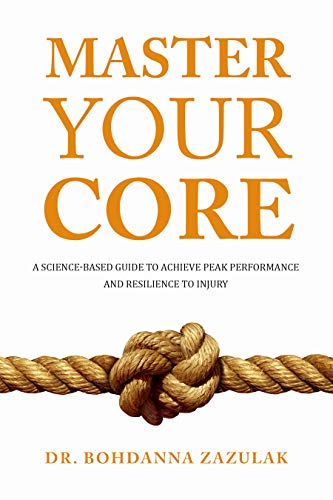Master Your Core – A Good Intro to How the Body Moves Through Space

I’ve been a friend of this site long before I got my doctorate in Physical Therapy. Sean and Max told me they had a book that needed reviewing called “Master Your Core” and I got excited to write for this site again on a topic other than A-Rod’s gambling or Masahiro Tanaka’s inefficient core.
I agree with much of what Bohdanna Zazulak writes about in “Master Your Core” and think she presents useful material that can be applied to a wide array of readers looking to improve how they perform and feel. Much writing in the wellness and fitness industry is either not specific enough to be useful, focuses only on the musculoskeletal system, or is filled with complete nonsense. Luckily, this book has none of that.
Bohdanna does an excellent job of exploring factors outside just muscle and bone and speaks extensively about the importance of awareness of our bodies. Plus, she uses scientific concepts and research to support her claims. This book is a good introduction for those looking to improve core strength, trunk control, and mindfulness in a tested manner. This book contains a basic map that gives you generalized strategies that you can adapt for your own personal needs. While, I disagree on some specifics of how to accomplish the goals of the book, that is more a matter of style and personal experience than substance. I would recommend the content of the book to someone looking for a better understanding of how their body works and moves through space.
Outside of the content, the structure and style of writing made it difficult to read at times. On nearly every page there was a quote of some kind ranging from Confucius in a discussion on ‘Sex-Based Differences of Injury Mechanisms’ to the full lyrics of the song “Dem Bones” (“your leg bone’s connected to your knee bone…”), to the highly respected Dr. Oz’s take on genetics. I found that it detracted from the useful content contained in the book and made it read like a self-help book that was written from a template.
I have to note that one thing that made me leery of even reviewing the book from the start. Something was missing from the front, back, and spine of the book. As a physical therapist it is common practice to refer to yourself as a physical therapist after the use of the title doctor (if you hold a doctoral level degree). For instance, in writing I would put, “Dr. Michael Plude, PT” or “Michael Plude, PT, DPT” to signify that my doctorate is in physical therapy and not medicine, podiatry, psychology, dentistry, or philosophy. I found the usage of the “Dr.” title on the cover page to be misleading at best and deceitful at worst. Bohdanna mentions that she is a physical therapist on page 3, but by that point it is too late. The purchaser may have thought this was a book written by an MD or DO and gravitate towards it because of the instilled trust that the title holds.
Being a Doctor of Physical Therapy is not something of which to be ashamed and Dr. Zazulak, PT, DPT should refer to herself as a doctor because she has earned that academic degree. But when there appears to be a misrepresentation of professional or academic title on the title page of a book, it makes it difficult to trust that the author will not misrepresent research and other aspects presented further along in the book. I hope it was just a gross oversight on the editing team, because the content of the book was good.
Overall, very good content, but poor writing and editing make it difficult to stay engaged.
–
Dr. Michael Plude, PT, DPT, CSCS
Founder of Michael Plude Physical Therapy
Founder of Innovative Movement and Performance
















